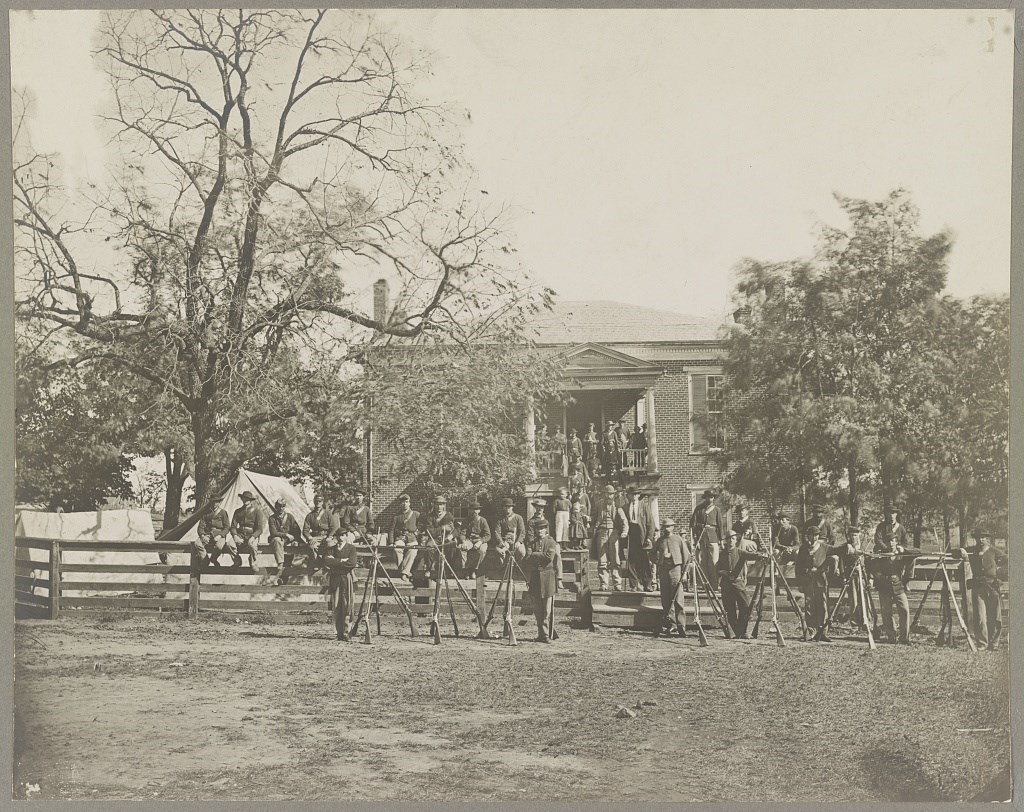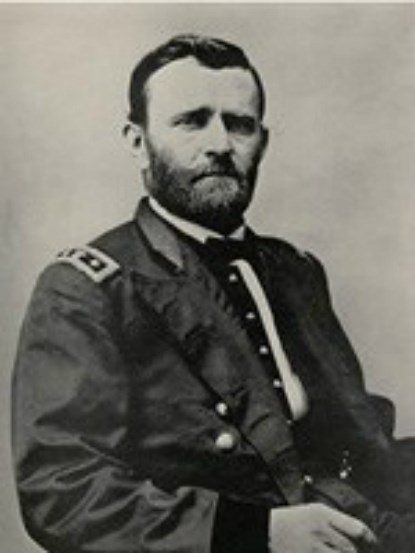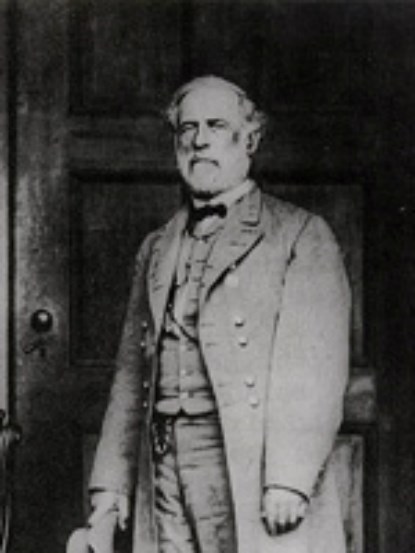
Photo Courtesy of the Library of Congress Most people think of the Generals Robert E. Lee and Ulysses S. Grant when they think about Appomattox Court House. These men are without a doubt main characters in the events that took place here. But did you know there were many other notable people present as well? Take some time to explore some of the other commanders, soldiers, and civilians who help make the story of Appomattox come alive! 
NPS Photo Lt. General Ulysses S. GrantGeneral-in-Chief of the Federal Forces
That's how Abraham Lincoln once characterized his general in chief. U.S. Grant oversaw the operations of all Union forces in the Appomattox Campaign. He dogged pursuit of Lee's troops after the fall of Richmond and Petersburg. It was Grant's command that led to the surrender of Lee's Army of Northern Virginia. Life Before ServiceHiram Ulysses Grant was the first child born to Jesse and Hannah Simpson Grant, on April 27, 1822. He grew up in rural Ohio and acquired a passion for horses and a talent for breaking and training them. It was an asset that served him well throughout his military career. West Point and Early CareerNominated in 1839, Grant entered the military academy at West Point as "Ulysses Simpson Grant". Simpson having been the maiden name of Grant's mother. The name was to follow him for this rest of his life. Grant was noted for his distinguished service during the Mexican War in the armies of Zachary Taylor and Winfield Scott. Following this war he successfully (and sometimes unsuccessfully) worked as a farmer. He also worked as real estate salesman, county engineer candidate, customhouse clerk, and finally, clerk in a leather store. The leather store happened to belong to Grants two brothers in Galena, Illinois A Nation DividedWith the start of the Civil War, Grant achieved rapid advancement from relative obscurity. Within three years he commanded the armies of the United States. Victories at Forts Henry and Donelson in 1862 won him the acclaim of the nation and the moniker of "Unconditional Surrender" Grant. After the Battle of Shiloh, he focused on taking the Confederate stronghold at Vicksburg, Mississippi. Vicksburg was where the Union success split the Confederacy in two, and gave the Union control of the Mississippi River. Grants success in the western theater earned his appointment to Major General in the Regular Army. Grant continued to move his forces east through Chattanooga. Then on to the Wilderness, Spotsylvania Court House, and Cold Harbor, until stopped at Petersburg, Virginia. Forced to lay siege to Petersburg in June 1864 (much as he had done in Vicksburg), Grant finally forced the capitulation of city in April 1865. Grant then advanced on the Confederate capitol at Richmond, Virginia. A Meeting of GeneralsIn early April 1865, Grant's troops succeeded cutting off Lee's hopes for much needed supplies. He did this by bringing the retreating armies of General Lee to bay in the area surrounding the small village of Appomattox Court House. A resigned Lee agreed to meet with Grant on April 9th at the home of local resident Wilmer McLean where treaty terms were reached. Grant proved to be as generous in victory as he had been relentless in battle. Grant issued more than 23,000 paroles allowing Confederate troops to return to their homes and farms. He even allowed them to keep the horses they had brought into battle. A Political LifeAfter the end of the Civil War Grant's reputation as a national hero propelled him into politics during the reconstruction period. In 1868 he was elected the eighteenth President of the United States and served two terms. |

NPS Photo General Robert E. LeeCommander of the Confederate "Army of Northern Virginia" Early LifeBorn on January 19, 1807 in Westmoreland County Virginia, Lee was the son of Anne Hill and Henry Lee, a distinguished cavalry officer during the American Revolution where he gained the nick-name "Light Horse Harry." A Military Career BeginsLee graduated from the US Military Academy at West Point in 1829. Two years later married Mary Ann Randolph Custis, a descendant of Mary Washington. In the War with Mexico, Lee was assigned to the army under Generals John E. Wool and Winfield Scott. Lee was later wounded at the Battle of Chapultepec. Lee distinguished himself during the war and received several promotions in rank after the war ended. In the decade that followed, he served as superintendent of West Point and accepted a command in the 2nd US Cavalry. It was by chance that Lee was in Washington in 1859 when the violent abolitionist John Brown raided the United States Arsenal at Harpers Ferry. Placed in command of Federal troops sent to recapture the arsenal, Lee directed the soldiers who stormed Brown's last holdout and captured Brown and his fellow conspirators. A Choice Between Home and CountryLee declined an offer to command the Union Army at the outbreak of the Civil War and offered his services to his native state. After serving in several administrative and field positions, he was assigned to command the Confederate Army at Richmond. An army he named the "Army of Northern Virginia." Under his command this army exploited Union mismanagement on many battlefields. This made Lee one of the most victorious commanders for the South. By late January 1865 he had been made general in chief of all armies in the, by then, failing Confederacy. The March to the EndAfter nine months of being under siege at Petersburg and Richmond, Lee was compelled to abandon these positions. He recommend the government’s evacuation of their capitol. Thus began the march west in an attempt to re-supply and save the Confederate armies. Lee had hopes of joining with Johnston’s forces in the Carolinas. Warfare became a matter of rapid movements with Lee retreating and Grant’s armies pursuing. The culmination of the campaign occurred on April 9th in the small village of Appomattox Court House. Here Lee, realized the inevitable and agreed to meet Grant to discuss terms of a surrender of the Army of Northern Virginia. |
Last updated: March 20, 2018
